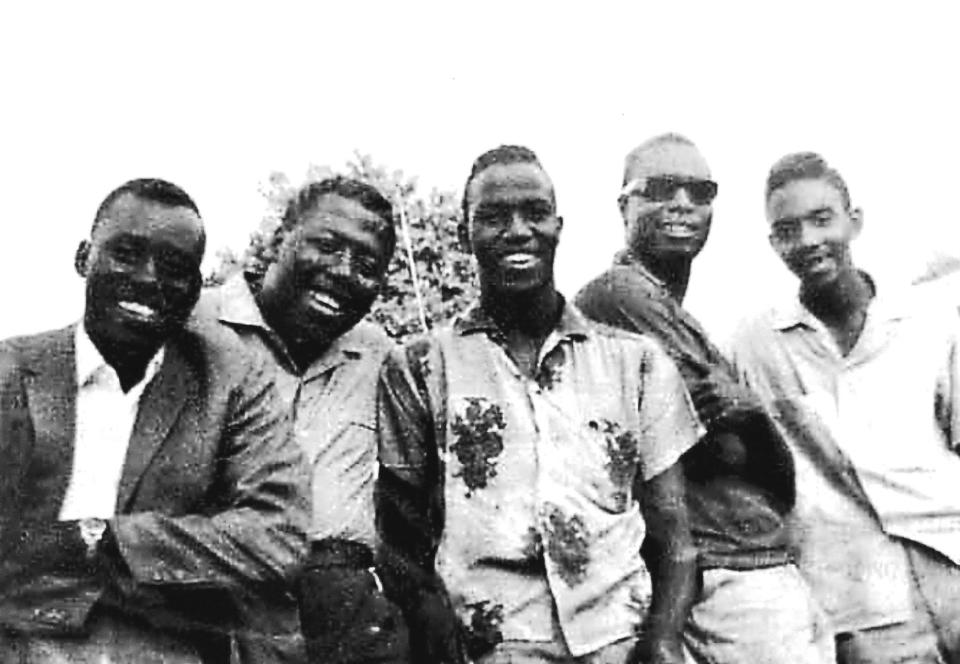Caprock Chronicles: The Velvets featuring Virgil Johnson: Odessa's Doo-Wop legends, Part 1
Editor’s Note: Jack Becker is the editor of Caprock Chronicles and is a Librarian Emeritus from Texas Tech University. He can be reached at jack.becker@ttu.edu. Today’s article about Virgil Johnson and The Velvets is the first of a two-part series by frequent contributor Chuck Lanehart, Lubbock attorney and award-winning Western history writer.
A quintet of Odessa youngsters made music history in the early 1960s, rising to the top of pop charts, then fading into the sunset, largely due to racial stereotyping of the era. Lead singer Virgil Johnson overcame The Velvets’ unfortunate decline, becoming a renowned Lubbock educator and popular entertainer.
Virgil Johnson was born Dec. 29, 1935, in Cameron, Milam County. When he was a small child, his family moved to Lubbock. The Johnsons worshipped at New Hope Baptist Church, where Virgil sang in the youth choir. He attended Dunbar High School and performed with a local singing group. After graduation, he enrolled at Bishop College in Marshall, where he sang in a group called The Dynatones.
After earning a degree in education, Virgil found his way to Odessa, where he became an English teacher at Blackshear Junior High. In 1959, he recruited four young men and formed a singing group, The Vellbairs, later known as The Velvets. All sophomore or junior students at Blackshear High School, they were bass singer Mark Prince (born 1942), tenor Clarence Rigsby (1942), first tenor Robert Thursby (1941) and baritone William Solomon (1941). Virgil, then age 24, was lead singer.

They would gather at the corner of South Tom Green Avenue and East Pearl Street and elsewhere, singing — a capella — songs which would become 1950s classics, “Blue Moon,” “Oh What a Night,” and many others. “They would get out of school in the afternoon — out of band practice, out of football practice — then they’d come to my practice,” Virgil remembered. “We would harmonize and doo-wop on the street blocks and street corners, and everybody listened to us.
"That was back when there were no drugs on every corner," Virgil said. "We just had clean fun. We started harmonizing after school around 6 or 7 p.m. just for something to do. Then we got pretty good and began singing at local functions in Abilene, Odessa and Lubbock.”
The group also performed on local radio, where they met Roy Orbison from nearby Wink, before his rise to fame. According to Robert Thursby, members of The Velvets were backup singers for Roy on Odessa’s KOSA radio. In 1960, Roy’s “Only the Lonely” shot to Number 2 on pop charts. Soon, Roy helped his friends The Velvets get their big break.
Virgil received a call from Roy on his school’s office phone. Roy asked Virgil, “How would you like to come to Nashville and record a record?” Virgil almost fainted. “After I got myself off the floor and realized this was a reality, I agreed.” The Velvets were on their way to Tennessee.

In Nashville, Roy introduced the group to Monument Records owner Fred Foster, who had produced Roy’s early recordings. Foster re-named the quintet “The Velvets featuring Virgil Johnson” to distinguish them from an earlier group similarly named. They recorded songs written by Virgil, Roy and others. “These were songs about, ‘I love you, girl,’ where the woman was respected, and you would sing to her,” Virgil explained. “You might sing to her something you could not say to her, and she would like that.”
The music known as “doo-wop” originated in urban African American communities during the 1940s. Popular during the 1950s and early 1960s, the genre featured vocal group harmony with little instrumentation. The Velvets — known as a doo-wop group — were different. First, The Velvets originated in West Texas, certainly not an urban area. Although all members were Black, most listeners heard a White sound. Finally, Foster recorded The Velvets with lush string arrangements accompanied by talented Nashville session musicians like saxophonist Boots Randolph and pianist Floyd Cramer.
“That Lucky Old Sun,” was The Velvets’ first release, and it climbed the national charts. Their next song, “Tonight (Could Be The Night),” was released in 1961, peaking at Number 26 on pop charts. “Tonight” — Virgil’s composition — became The Velvets best-known song, described by critics as “perfect as Black pop music would get.” Behind Virgil’s lead vocal, Mark, Clarence, Robert and William chanted “doo-wop,” one of the few times the phrase was recorded on vinyl.

The group’s follow-up was a song written by Roy and Joe Melson. “Lana” barely charted in the U.S. but was a No. 1 hit in Japan. (Roy later recorded the song.)
"Some might say, 'Oh, big deal. Number One in Japan,’" Virgil said. "But it would have been a big deal to me to have had the Number One song in Brownfield. We didn't have the success of Buddy Holly. But in our own way, we were just as good, just not as famous."
As a result of the success of "Lana," The Velvets planned a tour of Japan with Roy. "The tour fell through and my heart fell, too," Virgil lamented.
Part Two of this series will be published in next week’s Lubbock Avalanche-Journal.
This article originally appeared on Lubbock Avalanche-Journal: Caprock Chronicles: The Velvets featuring Virgil Johnson: Odessa's Doo-Wop legends, Part 1

